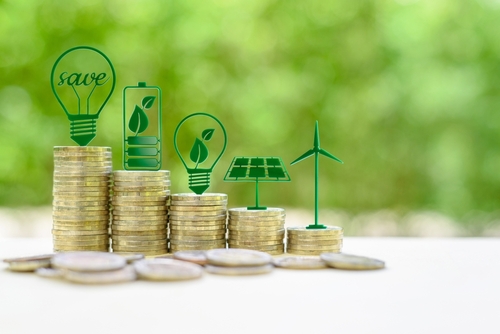U.S. clean energy transmission in full swing as renewable sourced power generation hits new record

While 2022 was a rough year for energy supply and pricing, for clean energy, it was a banner year for integration into the wider grid, purchase of electric vehicles, and political assurances of commitment to decarbonization, according to a new report from BloombergNEF and the Business Council for Sustainable Energy (BCSE).
In their 2023 Sustainable Energy in America Factbook, the authors analyzed data from all 50 states, highlighting the contributions of key energy sectors, market and investment dynamics, technology trends, and policy developments. This 11th annual report concluded that clean energy is now ingrained in the U.S. economy, with global financing for decarbonization technologies topping $1 trillion globally. In comparison, energy transition investment rose 11 percent year-over-year to $141 billion.
“In a year dominated by tumult and upheaval in global energy markets, a broad portfolio of technologies helped ensure that the clean energy transition continued to advance,” Lisa Jacobson, BCSE president, said. “The question now is how fast we can move. Efficient implementation of recent climate and infrastructure legislation, as well as common sense federal permitting and siting reform, will be necessary to capitalize on the sustainable energy growth of 2022.”
In all, renewables’ contributions to the national grid rose faster than other major sectors, growing 13 percent year-on-year to its highest level to date. As a result, renewables generation outpaced coal as the latter’s output tumbled. Even with natural gas price hikes, the pair now account for 62 percent of total U.S. power generation when combined with renewables. A decade ago, they amounted to a combined 43 percent. Now, zero-carbon power alone – meaning renewables like wind and solar, along with nuclear power – nearly reaches that, at 41 percent of total generation.
The past year was particularly beneficial for wind and solar output, but hydropower production also saw growth. Investment in new decarbonization technologies is on the rise, and sales of electric and fuel cell vehicles reached nearly 982,000 – a 50 percent growth over 2021. At the same time, energy storage builds hit a new record as well, with 4.8 GW added. On top of all of this, the signing of the Inflation Reduction Act signaled stability for the industry for a long time to come, providing a legislative commitment to decarbonization and at least $369 billion in support for transition technologies.
While much of this painted a rosy picture, the report was not without concerns. Citing impending climate impacts, the report’s authors concluded that the clean energy transition must accelerate still further, especially as despite all this transition growth, U.S. emissions managed to rise a percentage point in 2022 after tumbling 3 percent throughout the pandemic. Nor is the U.S. on track to meet its Nationally Determined Contribution (NDC) to emissions reduction under the Paris Agreement. Last year, emissions were 13.8 percent below 2005 levels, but the NDCs require that number to reach 26-28 percent by 2025.
“Rising total emissions are obviously not good, but there were silver linings in the data,” Ethan Zindler, head of Americas for BloombergNEF, said. “The long-term trend suggests that power sector emissions will keep sliding as more renewables come online. Transport-related emissions finished 2022 below pre-pandemic levels and appear to have turned a corner. In 2023, we will see the annualized effect of the approximately 1 million new electric vehicles that hit the road in 2022.”
